The best TVs of 2020 are truly a sight to behold. Offering the best picture processing, connectivity, smart platforms, format support, build and design, these are the sets that were unrivalled throughout the past year – or, rivalled only by each other.
There are a huge number of televisions entering the market each year, all of them vying for your attention, and your cash. That's why we've brought together our pick of the best TVs for 2020, for a range of panel technologies like QLED and OLED, a mix of new Samsung TVs and sets from LG, Sony and Panasonic, and the best affordable models among the truly high-range displays out there.
The best TVs available now are still mostly 2019 models, though that is set to change in the coming weeks and months as new sets are released – such as the Samsung Q950TS 8K QLED, which has already snuck into our list below.
Best TVs on Amazon Prime Day and Black Friday
Amazon Prime Day 2020 is expected in October and not long after at the end of November it’s Black Friday. Sale season is fast-approaching.
We can never say for sure which devices will be in the sales, but usually TVs get mighty discounts – especially slightly older models. Although we can’t guarantee the newest, high-end models in this list will be getting discounts, Prime Day and Black Friday are fantastic opportunities for you to save some money on a new TV – whether you’re after a huge 65-inch TV or a more compact 40-inch TV model.
That means whichever one of the best TVs you have your eye on, it makes sense to wait and see if it’s set to be discounted – or whether you can bag yourself a bargain with the version that came before it.
As usual, we’ll be showcasing all of the best Amazon Prime Day deals and Black Friday deals here on TechRadar. But be sure to check back to this page too if your priority is finding one of the TVs from this list. Our price finding system will bring you the best deals on all the products we’ve selected below.
- Best 4K Ultra HD Blu-ray players: to watch the highest-quality discs you can
It's crucial to remember that the best TV overall may not be the one best suited to your needs. If the TV you're buying isn't the right size for your living room, a sensible cost given your budget, or able to support the HDR formats you're keen to try, it won't be as perfect for you as it is for someone else. Combing through spec sheets can be pretty mind-numbing work too: that's why we've brought together our pick of the 8 best TVs in this one guide, to help you choose the right one for you between them.
You can also check out our best 4K TVs guide, or just the cheapest 4K TV prices for a truly bargain deal. But, if you're looking for the best-of-the-best TV out there today without limits or stipulations – or a particular resolution in mind – this is the place for you.
Don't know where to start? Watch our TV buying guide video below:
Best TVs 2020 at a glance:
- Best TV overall: Panasonic HZ2000 OLED
- Best TV with OLED: LG CX Series OLED
- Best TV with 8K: Samsung Q950TS QLED
- Best TV for motion: Sony Bravia A8/A8H OLED
- Best TV with Ambilight: Philips OLED 754 OLED
- Best TV for gamers: Samsung Q80T QLED
- Best on a budget: Panasonic HX800
Best TVs

1. Best TV overall: Panasonic HZ2000
A true home cinema experience, and one of the best TVs ever made
55-inch: Panasonic TX-55HZ2000 | 65-inch: Panasonic TX-65HZ2000
What is the best TV of 2020? Panasonic has released a number of new OLEDs this year, including the HZ1000, HZ1500, and an entry-level HZ980 model – but its the HZ2000 that shows the capabilities of today's high-end televisions at their best.
The HZ2000 has a custom OLED panel that elevates the already-incredible picture to new heights, putting Panasonic's experience in the world of master monitors to brilliant use.
Handling much of the heavy lifting is the brand’s HCX Pro Intelligent processor, first seen on last year’s GZ2000 flagship. It’s distinguished by an ability to deliver bright, saturated colours and huge contrast, even in brightly-lit scenes.
Pictures on the HZ2000 are never less than cinematic, and the sound won't let you down, either. Here you'll find 140W Dolby Atmos speakers and upward-firing drivers – tuned by Technics – bringing you the closest you can get to the cinema in your own living room.
Prices start at £3,299 for the 55-inch model, but if you can afford it, you won't be disappointed. Note that this model isn't coming to the US, or Australia – but that UK shoppers can invest in this triumph of a television today.
Read the full review: Panasonic HZ2000 4K OLED TV



2. Best TV with OLED: LG CX Series
A mesmerizing OLED TV
48-inch: LG OLED48CX | 55-inch: LG OLED55CX | 65-inch: LG OLED65CX | 77-inch: LG OLED77CX
The LG CX OLED is certainly the best OLED TV for 2020, and fully deserves to scrape the top of this list to the best TVs available today.
Iterating on last year's LG C9 Series, the LG CX might not seem all that different – and it isn't. But by continuing the same mesmerizing picture quality and standout webOS smart platform, with a few modern-day updates like HDMI 2.1 and an a9 Gen 3 processor, it's managed to outdo its predecessor.
With a new 48-inch OLED TV size now available too, the CX is an even more flexible proposition for a wider variety of wallets and homes. With a slimline design and support for Dolby Vision and Atmos – along with bellowing built-in audio – it's a fantastic choice at any size.
LG is really looking to entice gamers with its 2020 range, too, with rock-bottom input lag, support for Nvidia G-Sync, and compatibility with 4K/120HZ gameplay for next-gen consoles.
You won't get HDR10+ here, sadly, and UK viewers will have to go without all of their fave catch-up apps, but make no mistake – this is the best OLED TV for you in 2020.
Read the full review: LG CX OLED

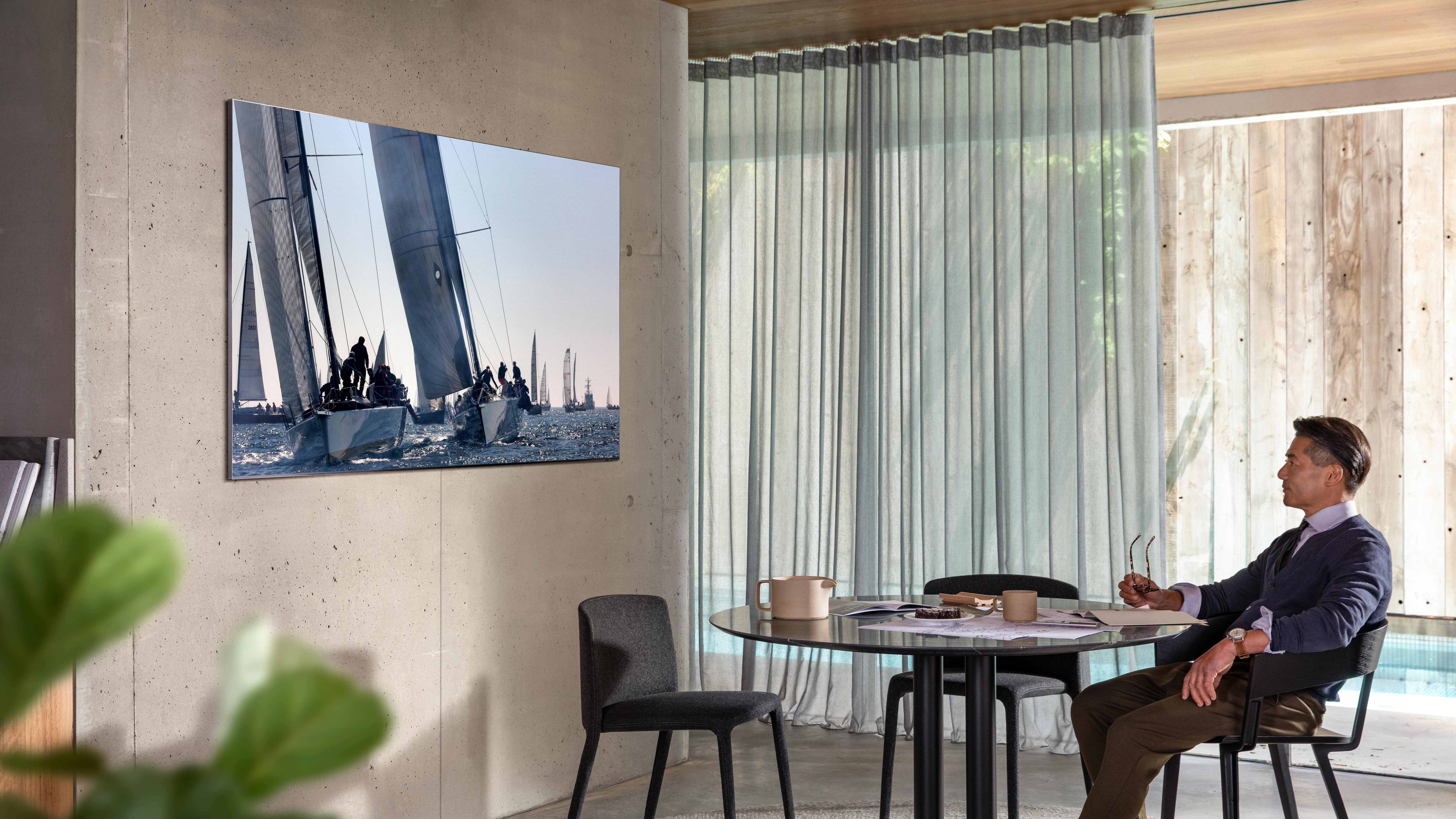
3. Best TV for 8K: Samsung Q950TS QLED
An 8K marvel for 2020
65-inch: QE65Q950TSTXXU | 75-inch: QE75Q950TSTXXU | 85-inch: QE85Q950TSTXXU
The first new 8K TV we've reviewed in 2020 is certainly setting the bar high. The Samsung Q950TS is the company's flagship 8K TV this year, and while shoppers will also be able to choose from two other lower-spec 8K QLEDs and a number of 4K QLEDs too, this is where Samsung is really trying to impress you.
The result? We're impressed. Samsung continues to lead the pack when it comes to upscaling to 8K from HD or 4K sources, shushing the naysayers who think 4K content looks best on 4K TVs.
Samsung has taken a long, hard look at its audio too – as it had to, given the middling audio performance of its 2019 sets. The Q950TS doesn't offer the game-changing audio we first hoped when we saw its OTS+ speaker array at CES 2020, but its sense of scale and height is still very much a suitably premium feature for a premium TV. The zero-bezel design doesn't hurt, either.
The Q950TS has launched in the US, with a 82-inch model retailing at $13,000 (around AU$21,400). You can pre-order the 65-inch, 75-inch, or 85-inch models in the UK for £5,999, £7,999 and £11,999 respectively – all of which are available from early May. Can't wait? You can check out the Samsung Q950R 8K QLED (from 2019) in the meantime.
Read more: Samsung Q950TS 8K QLED TV review

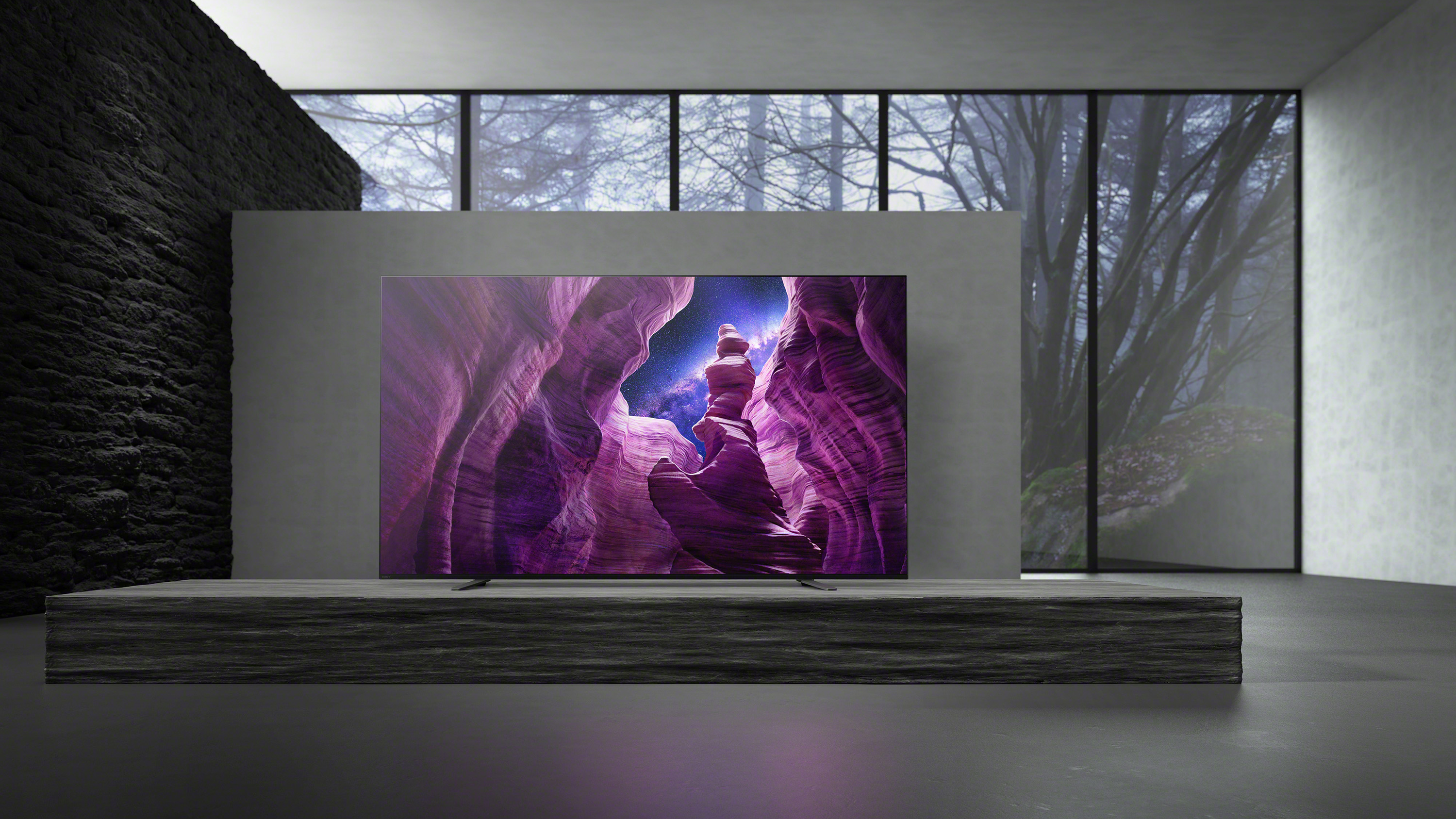
4. Best TV for motion: Sony A8/A8H OLED
Sony's new A8 is an outstanding OLED TV
55-inch: Sony XBR-55A8H | 65-inch: Sony XBR-65A8H
Finally, the Sony A9G OLED got knocked off its perch. Sony's new-for-2020 A8/A8H OLED TV takes everything we love about Sony's premium TVs and repackages it at a more reasonable price point.
You're getting premium OLED picture performance, with Sony’s top-line X1 Ultimate processor, Sony’s Pixel Contrast Booster (for more intense image highlights), and a new OLED version of the X-Motion Clarity feature Sony initially developed for its FALD LCD TVs.
The impressive sound system, too, combines a two-subwoofer bass system with screen-shaking Acoustic Surface Audio tech, making for a real treat as a TV to watch movies and TV shows. If you can deal with the slightly low brightness, you'll get to experience some of the most refined pictures of any OLED TV to date.
In terms of price, the 55-inch model comes in at $1,899 / £1,799, while the larger 65-inch comes in at $2,799 / £2,799.
Read the full review: Sony A8H OLED TV

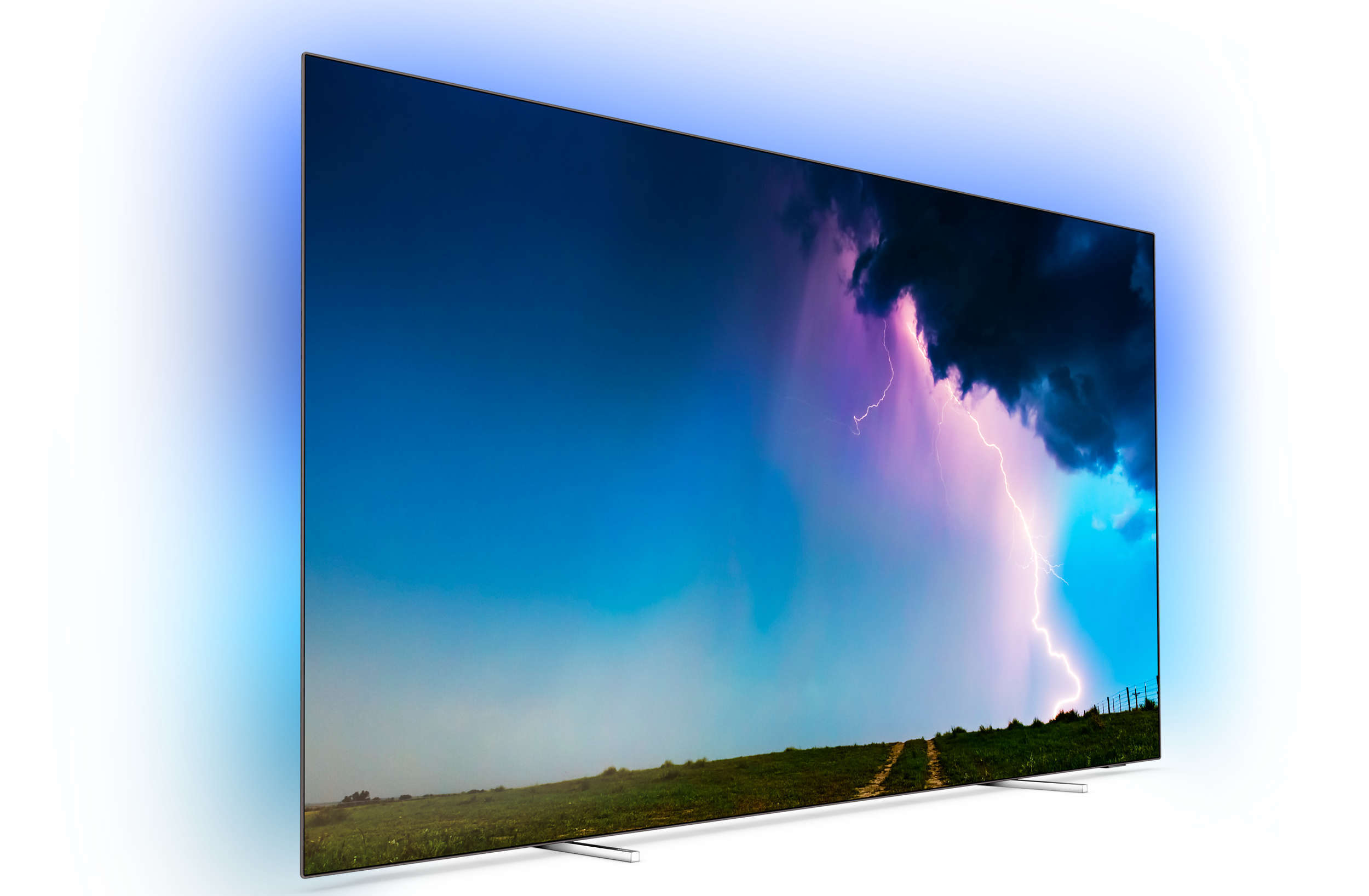
5. Best TV with Ambilight: Philips OLED 754
OLED plus Ambilight is a great combination
55-inch: Philips 55OLED754 | 65-inch: Philips 65OLED754
We're starting to enter an age of affordable OLEDs, and that's nowhere clearer than with the Philips OLED 754. Available now for just £999 in the UK, down from its initial £1,300 RRP, it's a fantastic example of the kind of quality already on offer for mid-budget TV buyers (along with the LG B9).
You won't get some of the bells and whistles of other, more high-end OLED TVs in this list, but you do get universal HDR support – something even the LG CX OLED is lacking.
The inclusion of three-sided Ambilight, too, is still a thrill, offering a lightshow behind the television for ambience (ambi-light, get it?) and feeling fully unique in its offering.
The Saphi smart TV platform could use some work, but this really is a knockout TV, and the second-gen P5 processor still works wonders on an OLED panel.
Read more: Philips OLED 754 TV review

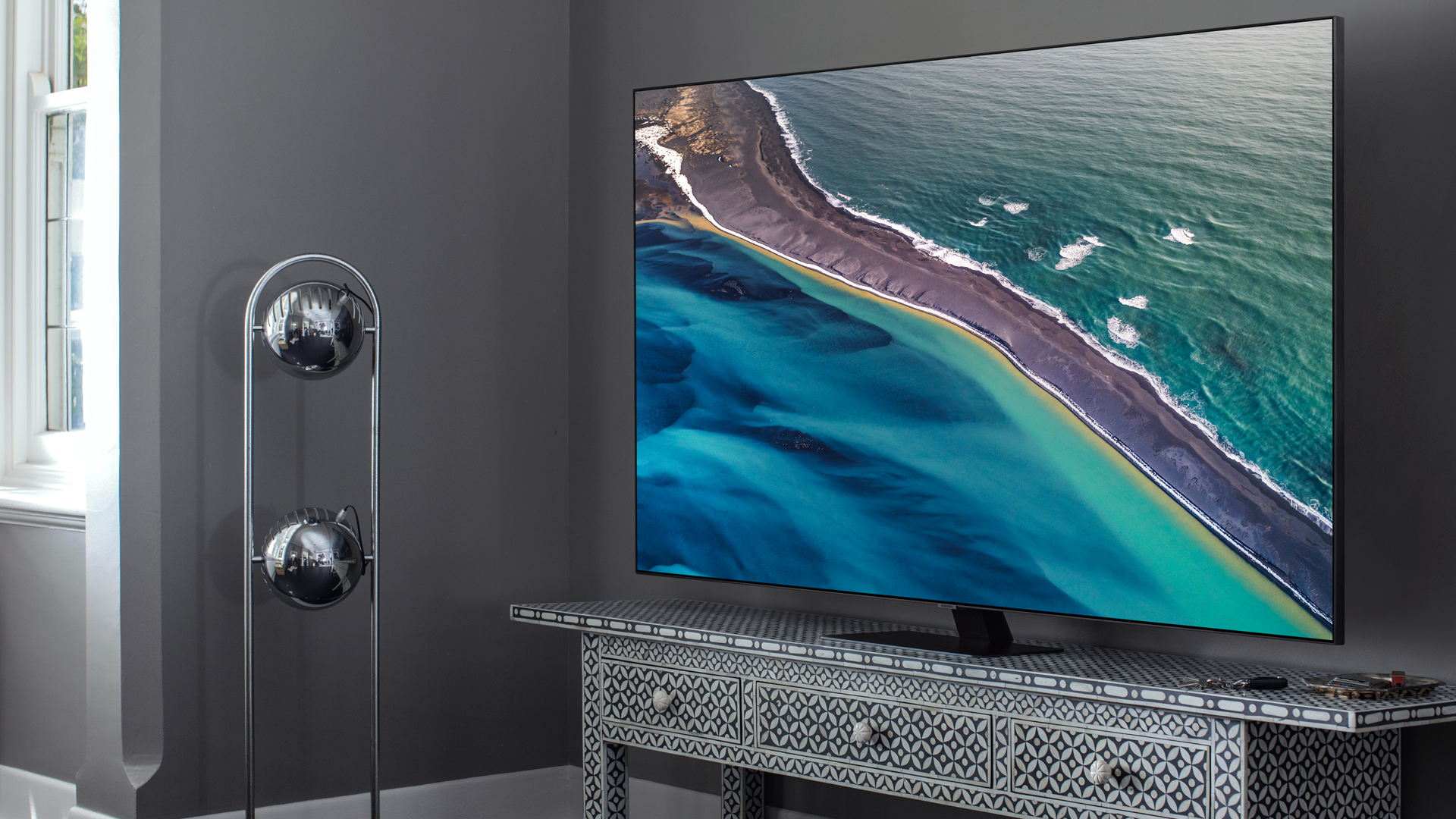
6. Best TV for gamers: Samsung Q80T QLED TV
A mid-range QLED with low, low input lag
Screen size: 65-inch | Tuner: Freeview/FreeSat | Resolution: 3840 x 2160 | Panel technology: QLED | Smart TV: Tizen | Curved: No | Dimensions: 1447 x 906 x 289mm (W x H x D)
The Q80T isn't the fanciest QLED in this year's range, but it really does offer a lot, as the cheapest 2020 QLED with a full-array backlight, meaning you don't have to skimp with an edge-lit display (like last year's Q60R).
It's a fantastic choice for gamers, given consistently low input lag to ensure your gaming console of choice – PS4 Pro, Xbox One X, or otherwise – is funnelling video output to your screen with as little delay as possible, at just 8.7ms image lag. The set's dedicated Game Motion Plus setting also reduces judder and blur for smoother gameplay, at a still-respectable 19.7ms lag too.
We found in our tests the odd speck of blooming around bright light sources – but the picture is still pretty exceptional, with bright HDR and AI-enhanced images to make this a great choice for any viewer-gamer buying a TV in 2020.
The 65-inch Q80T QLED is currently retailing at $1,799 / £2,299 / AU$3,339. It's technically an update to last year's Q70R, rather than the higher-end Q80R, so we possibly wouldn't advise upgrading if you have the latter already.
Read the full review: Samsung Q80T QLED TV
Budget option
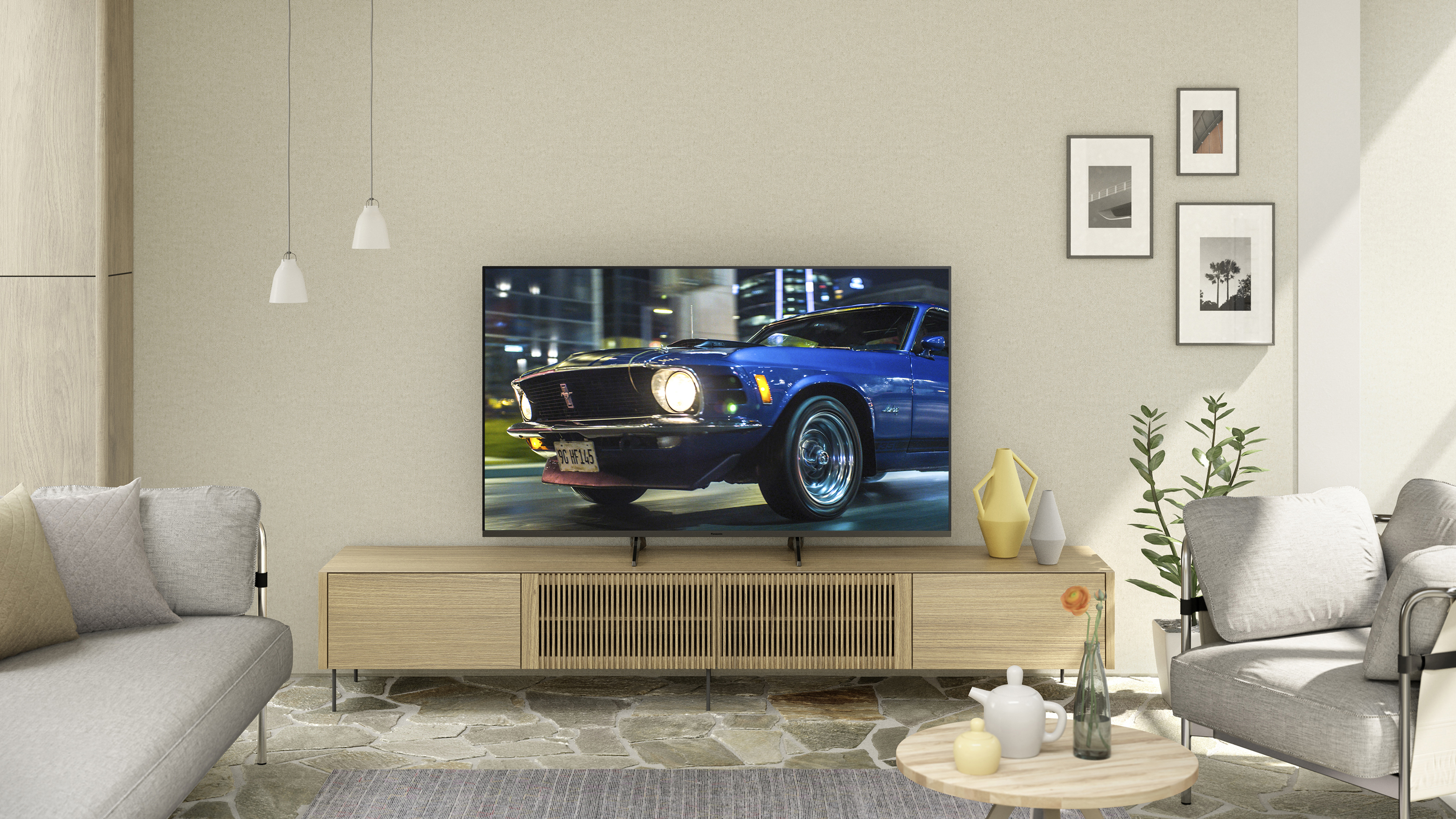
7. Best TV on a budget: Panasonic HX800
Panasonic ends our best TV guide with the mid-range HX800
As the 2020 successor to the GX800 – which topped this list last year – the HX800 continues everything that made us fall in love with Panasonic's mid-range LCD offering in the first place, with a sweet spot of price, performance, and functionality all in one.
Panasonic gets a lot of goodwill by offering multi-HDR support – throwing in HDR10+, Dolby Vision, and HLG in a single set – and is also unique in how this support is implemented across so much of its TV range. As a mid-range LCD, it's incredible that Panasonic ensures it has the same format support as higher-end OLED TVs like the new HZ1000 and HZ1500.
Add to that Panasonic's HCX processor, with filmic images and smooth action far beyond what we'd hope for at this price point, and you have a clear winner for the best 40-inch TV of 2020. Despite a bare-bones operating system, there's really very little to complain about.
You'll find the 40-inch model retailing at £699 at the time of writing, with a larger 58-inch model costing just £899 too. Panasonic doesn't ship TVs to the US, unfortunately, but for those of you in the UK, Europe, or Canada, this is a no-brainer choice.
Read our full Panasonic HX800 TV review
- Want better audio? Check out our guide to the best soundbars available
- Check out how to set up your TV properly too
- Or find the best universal remote for your new home theater setup
When to buy
Should you wait to buy a new TV? This is a question we're asked a lot. Like most technology, TVs are getting incrementally better all the time – which means, yes, if you wait a year there will probably be a bigger, flashier TV out there for less money.
You should make sure not to wait too long, though, as you might end up depriving yourself of today's advancements on the promise of tomorrow's. Smart TVs now come with operating systems built-in as standard with a number of streaming apps alongside regional broadcast television. Almost every new set – aside from small TVs – will be 4K resolution too, and come with some form of HDR capability, if not support for dynamic HDR formats like Dolby Vision and HDR10+.
The question of annual product ranges always rears its head, though. It can be tempting to splash out on a new 2020 TV, and you'll likely get something better for it. But last year's models still aren't far behind – usually at a far lower price, as retailers look to shift older stock – and any improvements for 2020 are likely to be incremental.
As ever, it's worth looking at the differences between a new model and the version it's replacing. The introduction of Samsung's Ultra Viewing Angle technology was a big boon for its high-end QLEDs in 2019, but other updates aren't nearly as notable.
If you do want to future-proof against the next wave of hardware specifications, though, the new HDMI 2.1 standard is going to prove crucial for serious gaming setups: allowing support for 8K resolution at 60 frames per second, 4K at 120fps, alongside a range of new gaming features that will be supported over HDMI. So keep an eye out for HDMI 2.1 if that's going to be important for you.

TV types
There are a lot of different screen types out there, too, all working in different ways to produce the same results. Each technology has its own unique strengths and weaknesses so here are some basics to consider:
LED TV: Direct LED
These displays are backlit by an array of LEDs (light emitting diodes) directly behind the screen. This enables localised dimming – meaning immediately adjacent areas of brightness and darkness can be displayed more effectively – and greatly improves contrast. LED TVs are also more power efficient and capable of a wider colour gamut than CCFL sets. Because of the extreme cost of mounting these arrays of LEDs, Direct LED TVs have largely been out muscled by Edge LED...
LED TV: Edge LED
With these TVs, LEDs of the backlight are mounted along the edges of the panel. This arrangement enables radically slender displays and offers superior contrast levels to CCFL, but can't achieve the same picture quality as directly lit LED sets. However, they do come in far cheaper which is why most LED TVs out there now use this technology.
OLED TV
The backlighting on OLED (organic light emitting diode) sets is achieved by passing an electric current through an emissive, electroluminescent film. This technique produces far better colours and higher contrast and also enables screens to be extremely thin and flexible.
Quantum Dot
As yet we're not quite at the stage where we're going to get self-emitting quantum dot LEDs, but they're a-coming. What we do have though is Samsung producing its Nanocrystal filter based on quantum dot technology to produce a seriously improved colour palette and contrast levels that get mighty close to the pinnacle of OLED.
Curved TV
Some manufacturers are now making TVs that have slightly curved screens. But unlike old CRT TVs, the curve is inwards rather than outwards. The idea is that this makes every pixel equidistant from your eyes, delivering a more satisfying picture. However, there are drawbacks for this type of screen - the main one being that if you sit far enough to one side – more than 40 degrees or so – the curve clearly starts to affect the image's geometry, foreshortening content near to you and compressing the image's centre.

TV size
Buying a flatscreen television is a major investment and one that you can't afford to take lightly. Just popping into the closest store and grabbing the first plasma or LCD you see won't get you the best deal, the screen that suits your needs, or the gear you require to make the most of your new purchase.
People tend to pick the size of their flat TV based on the amount of space they have for it, this isn't necessarily wise. Flat TVs take up much less space than you might think, so your new TV may end up a foot or two further away from your viewing position, making the picture appear smaller.
Also, with hi-def, you can have a bigger screen and the same viewing distance without worrying about seeing blemishes inherent to the source. HDTV's lack of noise means that the ideal distance to sit from the screen is three to four times the height of the TV.
The trick here is to ensure that your TV is big enough to fill your line of vision, but small enough to be sharp and clear. Remember, if you intend to only watch standard-definition sources, the bigger the screen gets, the worse the image will look.
The ideal screen size can be calculated by multiplying the distance that you intend to sit away from it by 0.535 and then rounding this up to the nearest size.
So, if you sit 80in away from your TV, the ideal size is 42-inch (80 x 0.535= 42.8).
- What size TV should I buy?
- Check out the best cheap 4K TV deals going right now
from TechRadar - All the latest technology news https://ift.tt/3jF9EWt
via IFTTT


0 التعليقات: